Nissan Quest SE Review
Listen up guys: size matters. Not your penis; your testicles. Testicle size determines your level of sexual desire and stamina. By the same token, a minivan's interior is not the ultimate measure of its worth. While minivanistas love to boast about their whip's cubic capacity and cranny count, all MPV's can stow the better part of an NFL specialty team with air-conditioned ease. No, the true gauge of a minivan's basic appeal is its engine. All true pistonheads know that there's not a vehicle made– including minivans– that can't be improved by a large capacity, free-revving powerplant. Luckily, the Nissan Quest's got a big one.
Nissan's people mover holsters a detuned version of the Z-car's 3.5-liter six, with all the usual tricks of the trade (DOHC, variable valve timing and intake, multi-port fuel injection, drive-by-wire throttle, platinum spark plugs, etc.). In other words, this behemoth books. Well, OK, "browses swiftly". Empirically speaking, the Quest accelerates from zero to 60 in 8.2 seconds. The stat may not be stunning in these days of Hemi-engined Jeeps, but the Quest's 240 horses are a mighty frisky herd. The minivan bolts from the starting gate with a vigor that belies its looks, genre, size and age.
The Quest is now four-years-old. While the minivan's VQ35 powerplant is still earning attaboys from Ward's Automotive, its futuristic design is beginning to age disgracefully. The Quest's profile– a descending window line and forward-tilting rear end– was radical in its day. Now that the crossover crusade has begun in earnest, it's looking more and more like a people mover from Tomorrowland. The Quest's stubby nose and buggy eyes now appear different for different's sake, rather than artfully inspired.
The interior is dating faster than a Hollywood hooker. The Quest's center console was obviously based on those faux-Zen pedestal sinks that helped make expensive hotel bathrooms look so Starke. While upmarket lavatory planners have acquiesced to the immutable laws of shelf space, the Quest is stuck with its art school ambitions– from the seats' retro-modern shape, texture and tailoring to the 50's refrigerator-style door pulls. None of which are helped by the use of materials that couldn't get within a mile of an Audi factory before dying of shame.
The Quest's instrumentation cluster is by far the best/worst example of Nissan's hope that high-minded style would elevate their minivan's sales above its more prosaic competition. For one thing, the gauges are center-mounted– an ergonomic affectation that's almost as dangerously counter-intuitive as inward opening restaurant doors. For another, the display is an unforgivable farrago of analogue, liquid crystal and digital read-outs. Not only is it impossible to read the fuel gauge at a [sideways] glance, but the huge display STILL can't contain complete satellite radio information (867-5309 was apparently recorded by Tommy Tuto).
Strip away the Quest's MOMA posturing and you're left with a minivan that simply doesn't cut it in the Swiss Army knife Soccer Mom sweepstakes. While the Quest masters the minivan basics– dual remote operated sliding doors, fold flat seats, airbags aplenty, enough cupholders to re-hydrate a Bedouin camel train– it fails at the final furlong. There's no reverse-facing camera (an egregious oversight given its length), plug points for members of Laptops Anonymous, or underfloor storage. By the time a Quest owner figures out how to subsume the rear bench, a Town and Country owner will have stowed and gone.
But not for long. In addition to its peppy powerplant, the Quest's multi-link rear suspension keeps Nissan's four-wheeled whale surprisingly neat and tidy through the twisties. Although body lean is minimal, changing direction gives you a firm sense that you're in something gigantic that's about to topple over. Fair enough. Thrashing a Quest is about as sensible as asking six recently beached children not to drip water on the seats.
The Quest's biggest drawback is its lack of refinement. The aforementioned materials deficit is compounded by a lamentable lack of structural rigidity. Traversing a pothole isn't so much an event as a series of events, as shock waves careen around the cabin. There's also a large precision gap– or gaps without precision. None of the Nissan's controls snick with the finely-judged sensuality of the brand's sedans and off-roaders. In comparison to a polished jewel like the equally horsed Honda Odyssey, or the clever clogs Chrysler, Nissan's Quest seems like a low-budget exploration of previously mapped territory.
In an increasingly hot segment that takes no prisoners, Nissan needs to regroup, rethink and re-engineer their gi-normous people carrier. A function-over-form makeover is long overdue, starting with that absurd instrument stack and incorporating all the balletic seatery and hidden holdage that makes the other guys seem so damn sensible. But hey, at least we know one thing: the Quest has the stones for the job.
More by Robert Farago
Latest Car Reviews
Read moreLatest Product Reviews
Read moreRecent Comments
- Flashindapan I always thought these look nice. I was working at a Land Rover dealership at the time the LR3 came out and we were all impressed how much better it was then the Discovery in just about every measurable way.
- Bd2 If I were going to spend $ on a ticking time bomb, it wouldn't be for an LR4 (the least interesting of Land Rovers).
- Spectator Wild to me the US sent like $100B overseas for other peoples wars while we clammer over .1% of that money being used to promote EVs in our country.
- Spectator got a pic of that 27 inch screen? That sounds massive!
- MaintenanceCosts "And with ANY car, always budget for maintenance."The question is whether you have to budget a thousand bucks (or euro) a year, or a quarter of your income.





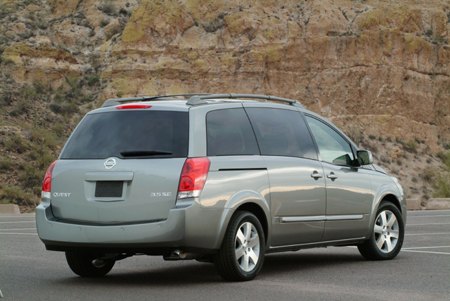

















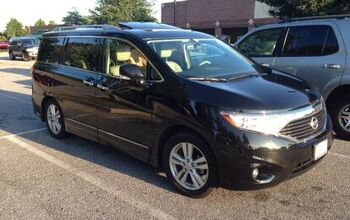
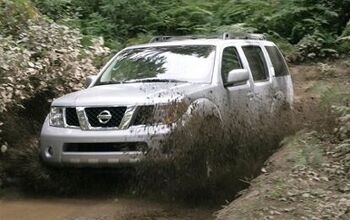
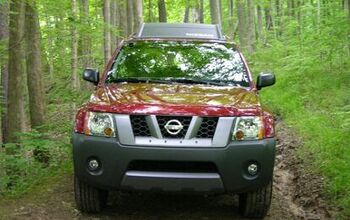
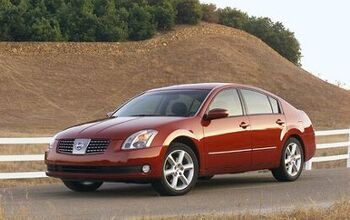










Comments
Join the conversation